#the great white hope 1970
Text
Oscar Nominee of All Time Tournament: Round 1, Group A
(info about nominees under the poll)

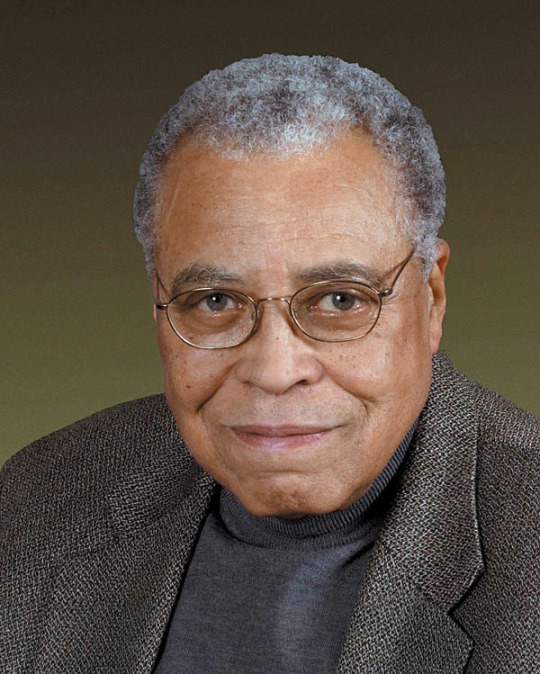
LYNN CARLIN (1938-)
NOMINATIONS:
Supporting- 1968 for Faces
--
JAMES EARL JONES (1931-)
NOMINATIONS:
Lead- 1970 for The Great White Hope
#academy awards#oscars#oscar nominees#lynn carlin#james earl jones#film#actors#faces 1968#the great white hope 1970#nominees group a#nominees group a polls
13 notes
·
View notes
Text
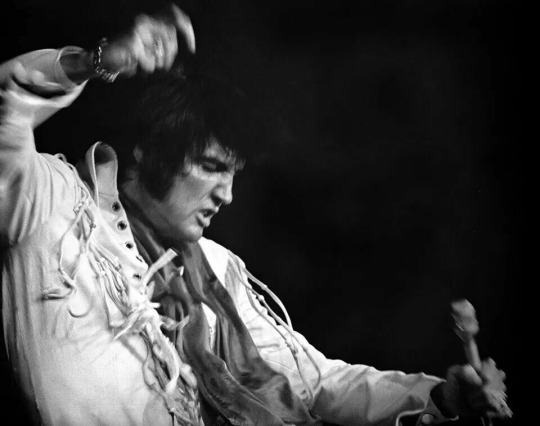
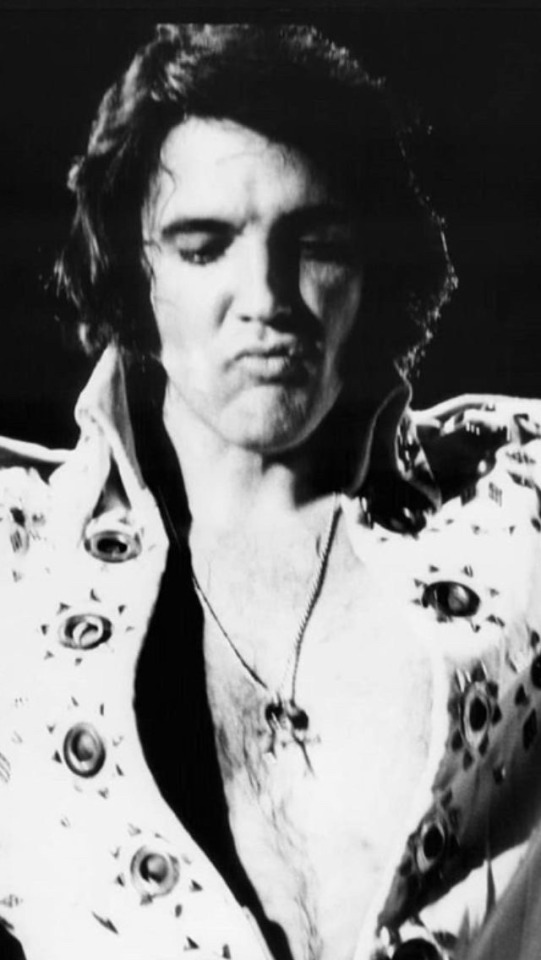
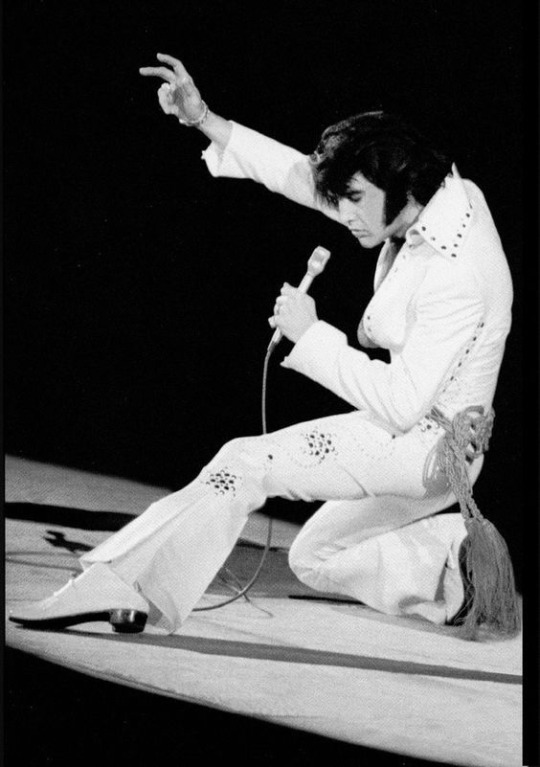
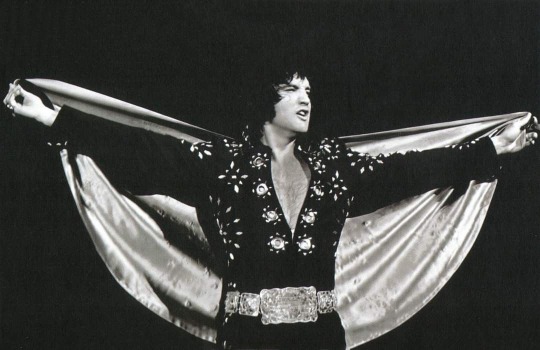
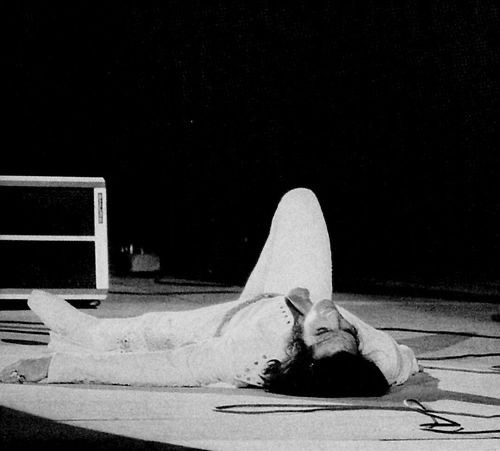
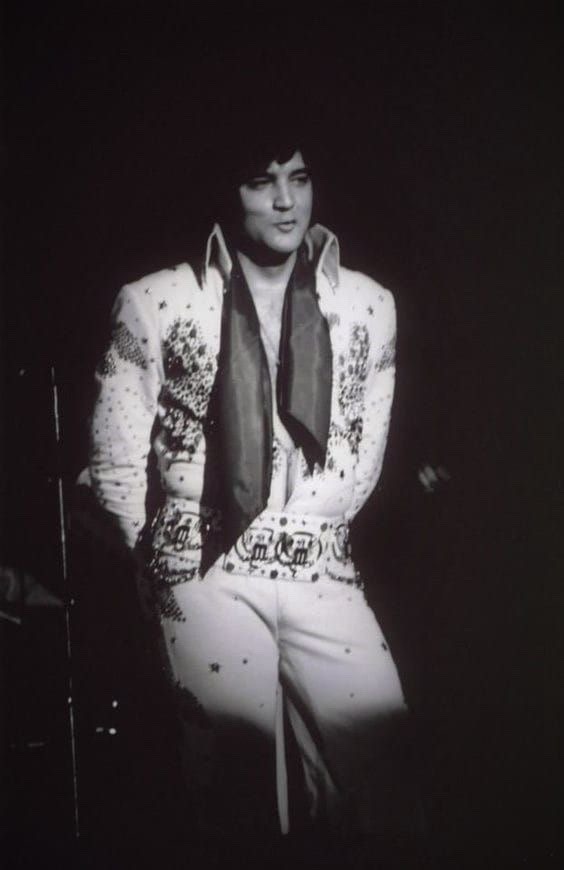
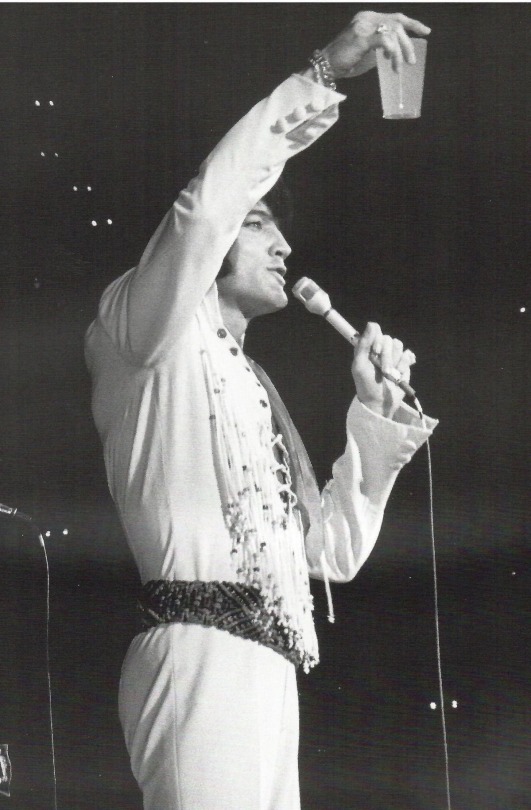
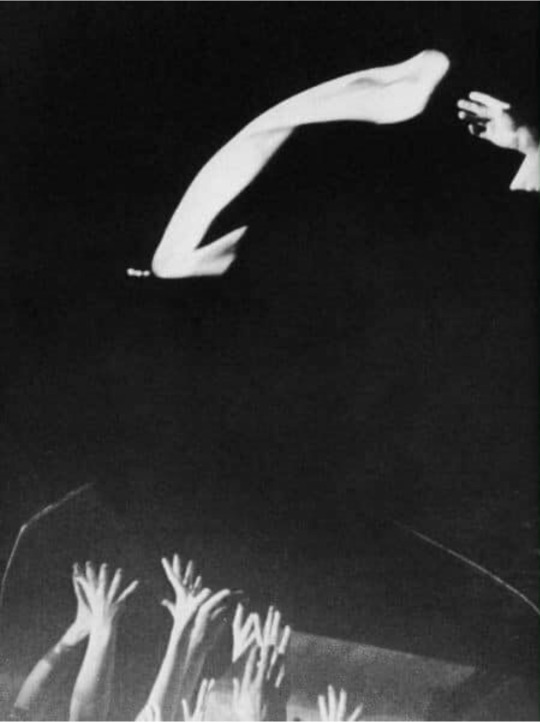
▪️▫️▪️▫️▪️▫️▪️▫️▪️▫️▪️▫️▪️▫️▪️▫️▪️
#another black and white jumpsuit collection lol#elvis#elvis presley#elvis fans#70s elvis#1970s#hope u guys are having a great week#a better one than me atleast#elvis cheers me up though
18 notes
·
View notes
Text
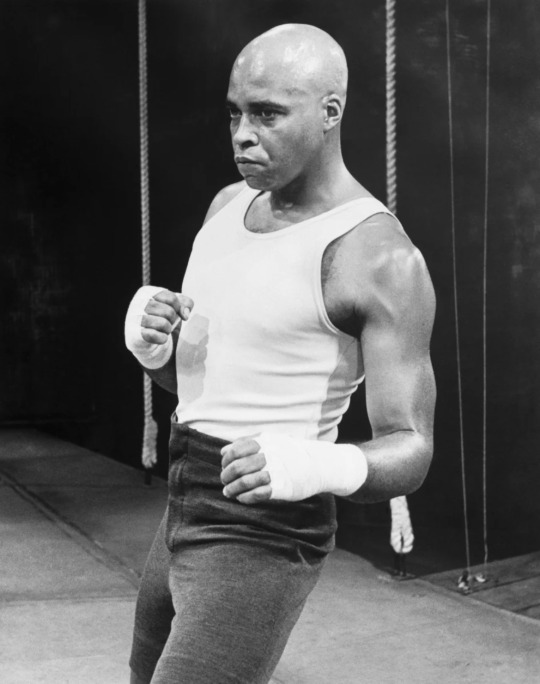
48 notes
·
View notes
Text
The Kenya Wildlife Service celebrated the successful transfer of 21 eastern black rhinos to establish a new viable breeding population for the species that was on the brink of extinction decades ago.
In an 18-day exercise executed by highly trained capture and veterinary experts, the Loisaba Conservancy received the 21 rhinos from three different locations, becoming the 17th sanctuary in Kenya where the mammoth animals can roam and intermingle.
“It’s incredibly exciting to be part of the resettlement of rhinos to a landscape where they’ve been absent for 50 years,” said Tom Silvester, CEO of Loisaba Conservancy.
Kenya had 20,000 black rhinos in the 1970s before poachers decimated them for their horns. By the time the Kenya Wildlife Service (KWS) was established in 1989, rhino numbers had declined to below 400.
Since then, Kenya’s eastern black rhinos have made a remarkable comeback and today there are an estimated 1,004 individuals.
Kenya is a stronghold of the eastern sub species of black rhino, hosting approximately 80 percent of the entire world’s surviving population.
“Surpassing the milestone of 1,000 rhinos within four decades is a significant accomplishment,” said Munira Bashir, Director of The Nature Conservancy in Kenya.
The reintroduction this month of these 21 animals this month is a great milestone in Kenya’s rhino recovery action plan, and was made possible by support from The Nature Conservancy, San Diego Zoo Wildlife Alliance, other partners—and the three reserves from where the 21 rhinos originated, Nairobi National Park, Ol Pejeta Conservancy and Lewa Conservancy.
“In the recent past, one of the main causes of mortality of rhinos has been territorial fights due to limited space in sanctuaries which has also led to suppressed growth rates due,” explained Dr. Erustus Kanga, the Director General of Kenya Wildlife Service. “I am elated to be associated with this momentous effort to secure more space for this cornerstone species.”
Meanwhile, southern white rhinos continue to thrive in Kenya, having increased from 50 individuals that were imported from South Africa in the eighties and nineties to reach the current population of 971 individuals.
Kenya is also playing a critical role in efforts to save the northern white rhino from extinction, as it is host to the only remaining two females of the species left in the world. The international BioRescue project has developed thirty embryos awaiting implantation into surrogate females within the closely-related subspecies of southern white rhino.
“The return of black rhinos to Loisaba, 50 years after the last known individual here was killed by poachers in the 1970s, is a demonstration of how impactful partnerships between governments and conservation NGOs can be for restoring, managing, and protecting our natural world,” said Dr. Max Graham, CEO and Founder of Space for Giants, one of the project partners.
“And, of course, the return of black rhinos here gives all of us one of the most precious commodities of all: hope.”
-via Good News Network, February 25, 2024
#rhino#rhinoceros#conservation#hope posting#endangered species#wildlife#kenya#good news#hope#zoology#zoo animals#keystone species
341 notes
·
View notes
Text

James Earl Jones (born January 17, 1931) is an American actor. Over his career, he has received three Tony Awards, two Emmy Awards, and a Grammy Award. He was inducted into the American Theater Hall of Fame in 1985. He was honored with the National Medal of Arts in 1992, the Kennedy Center Honor in 2002, the Screen Actors Guild Life Achievement Award in 2009 and the Honorary Academy Award in 2011.
Suffering from a stutter in childhood, Jones has said that poetry and acting helped him overcome the disability. A pre-med major in college, he served in the United States Army during the Korean War before pursuing a career in acting. Since his Broadway debut in 1957, he has performed in several Shakespeare plays including Othello, Hamlet, Coriolanus, and King Lear. Jones worked steadily in theater winning his first Tony Award in 1968 for his role in The Great White Hope, which he reprised in the 1970 film adaptation earning him Academy Award and Golden Globe nominations.
Jones won his second Tony Award in 1987 for his role in August Wilson's Fences. He was further Tony nominated for his roles in On Golden Pond (2005), and The Best Man (2012). Other Broadway performances include Cat on a Hot Tin Roof (2008), Driving Miss Daisy (2010–2011), You Can't Take It with You (2014), and The Gin Game (2015–2016). He received a Special Tony Award for Lifetime Achievement in 2017.
Jones made his film debut in Stanley Kubrick's Dr. Strangelove (1964). He received a Golden Globe Award nomination for Claudine (1974). Jones gained international fame for his voice role as Darth Vader in the Star Wars franchise, beginning with the original 1977 film. Jones' other notable roles include in Conan the Barbarian (1982), Matewan (1987), Coming to America (1988), Field of Dreams (1989), The Hunt for Red October (1990), The Sandlot (1993), and The Lion King (1994). Jones has reprised his roles in Star Wars media, The Lion King (2019), and Coming 2 America (2021).
Source: African Archives
175 notes
·
View notes
Text
Ok so I finally finished asking my mum about the characters fashion I'll ask my aunt about it another time, first I'd like to state that unlike my aunt who does fashion history as a job(there's probably an actual name to the job I just don't know it) this is just a hobby for my mum, also that both of them specialize in women's fashion
here's what my mum had to say on each of them
Sariel- mostly modern (boots, pants, belts) slightly 17hundrends, the knotwork on his jacket(?) Seems military inspired
Jin- looks like he's wearing jeans, good shoes, late Victorian and his shirt & tie looks 1920s
Chevalier- modern take on cavalier(16 hundreds)
Gilbert-"oooh oh no it's really looking like a nazi uniform, but his cane is gorgeous" that's all my mum wanted to say about him
Clavis- regency (purple jacket) white jacket looks like a great coat (still worn today most common in late 16 to early 17 hundreds) pants look like modern dress pants
Silvio- buccaneers (16&17 hundreds privateer) shirt regency, "those boots are just a mess"
Leon- "he looks like captain Harlock from albator", modern dress pants, military inspired, jacket looks modern
Keith- Spencer(a type of women's jacket during regency) modern pants looks like it had a fake fall front, looks militarily inspired, waistcoat looks modern
Rio- outfit one(commoner) "can be anywhere from modern to Victorian, so just generic"
outfit two(attendant) Victorian evening wear "oh that's a gorgeous tail coat!"
Outfit three (prince) button up looks Victorian enough, modern dress pants with a fall front, the tail of his jacket look like court wear from Louis the 14th, looks like he's wearing a jabot (necktie(not a modern one though))
Yves- waistcoat 1870s evening wear, modern pinstripe dress pants, look like cavalier boots but too short, Italian Renaissance linen shirt
Licht- modern pants, military inspired "its a mess"
Nokto- fancy trench coat, sleeveless tail coat??? Modern waiste coat, 1970s button up shirt & tie, modern dress pants, modern shoes
Luke- looks like he's dressed in knit fabrics (modern) pants look like jeans
Overall she said that all of them look to be wearing modern pants
I hope you guys don't mind being tagged @fang-and-feather @lorei-writes @sh0jun
#Ikepri#Ikemen prince#Oh also that my mum did this entirely based on memory#So this might not 100% be accurate
78 notes
·
View notes
Photo
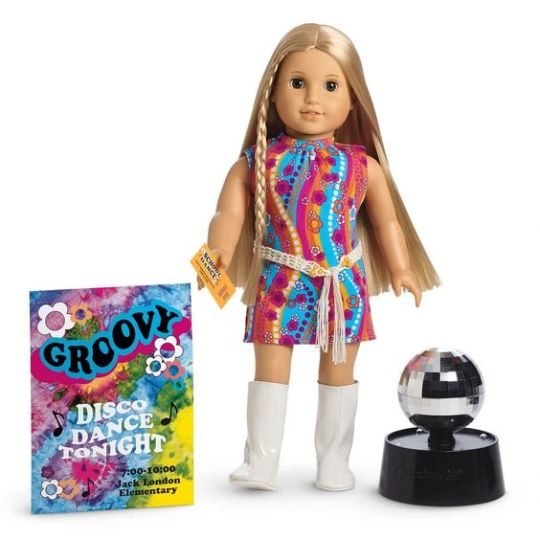
Julie’s Funky Flower Outfit is definitely the most egregiously 60s of Julie’s collection. While go-go boots and miniskirts were still very much a thing in the 70s, they were very different than this.

(1stdibs.com)


I’d like to see a purple minidress with a huge collar and these boots:

That would be a great 70s look! I love that they tried to bring Disco into Julie’s collection, but uh.... disco was very much an adult scene.


Disco dresses tended to be long and flowy. Pantsuits were shiny and sparkly. They moved with the body and were meant for dancing.



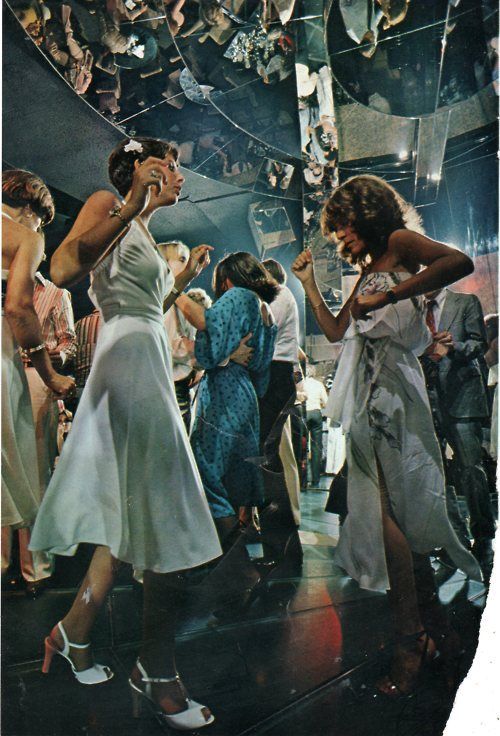

In the beginning, disco was a scene dominated by people of color and gay men. Disco was fundamentally Black music.
youtube
youtube
Disco didn’t really become mainstream until 1977, with the release of Saturday Night Fever, which was based on an article that was entirely fabricated. That kind of ruined it. It lost its edgy coolness and became whitewashed and lame.

However, since straight White men cannot let anyone else have fun that doesn’t involve them, there was an almost immediate “Disco Sucks!” backlash. It was unabashedly racist and homophobic. Its main supporters were “manly” rock’n’roll fans who apparently just hated dressing up and having fun. In July 1979, the Chicago White Sox tried to get fans to see a game with a “disco demolition night” that would burn a bunch of disco records, and it ended in a riot.

1970s proto-incel radio host Steve Dahl built a career out of shitting on Black and gay people just having fun and looking better than him, and then had the gall to say, “I’m worn out from defending myself as a racist homophobe” yeah poor fucking you. The glory of disco will live forever. There’s a reason “I Will Survive” is the ultimate disco anthem.
youtube
“I Will Survive” isn’t just a fun disco bop, it’s a declaration and a rallying cry that took on a very literal meaning during the AIDS epidemic. After the Pulse shooting, I broke down crying when I heard the chorus:
“Oh no, not I, I will survive
Oh, as long as I know how to love, I know I'll stay alive
I've got all my life to live
And I've got all my love to give and I'll survive
I will survive!”
I can’t help but feel it’s once again taken on new meaning today when people are out there openly calling for trans people to be erased. Disco is powerful and meaningful. It’s hope and something to hold onto, a beacon of light in times of immense darkness. We will survive!
289 notes
·
View notes
Photo
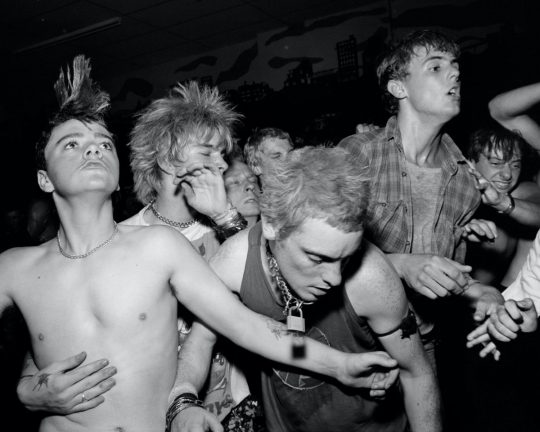
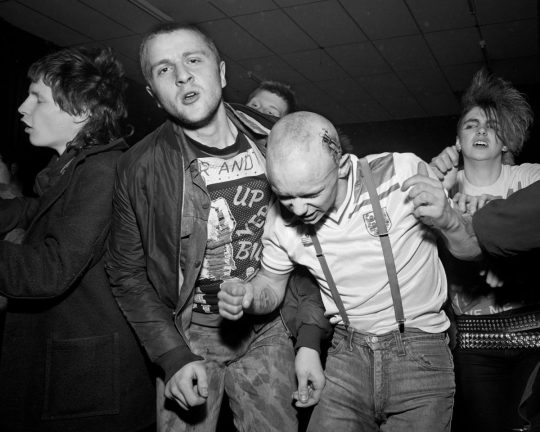
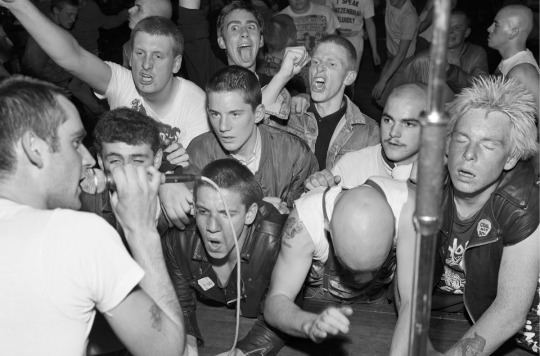

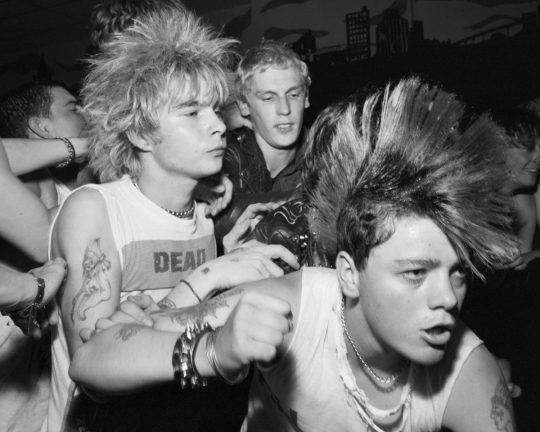

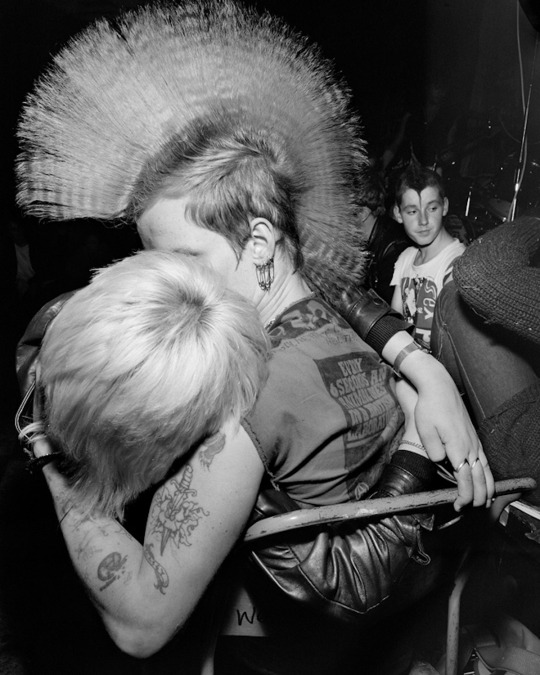
Young punks of the mid-’80s working class punk scene of north east England, as captured in 1985 by Chris Killip in the moshpits of The Station, an anarcho-punk venue set up in an old police social club in Gateshead, opposite Newcastle.
Retired Harvard professor Chris Killip was trying to photograph nightlife in Newcastle during a fellowship at the time and was blown away after finding out about The Station.
“...It was peak Thatcherism, and Tyneside – that being Newcastle upon Tyne, Gateshead, Tynemouth, Wallsend, South Shields and Jarrow – was hit hard by the region’s decline of industry. Shipbuilding, engineering and coal-mining jobs were diminishing and this caused long-term unemployment, whereby poverty, deprivation and crime prevailed. For a small group of youths in Gateshead, however, they found unity in The Station – a former police social club that had been transformed into a live venue and rehearsal space run by a local punk collective.
itsnicethat.com/
You’d think that a 39-year-old man, sporting white hair and always wearing a suit, would be questioned upon arrival at a place like this and that The Station was the kind of place one might be warned away from, especially if they didn’t fit a certain type.
“...But instead of the anti-social violence wrongly associated with anarchism Killip found solidarity. “These weren’t the punks of 1970s London,” he says, “these guys were politically aware. They were very keen on animal rights and would often join the miners’ strike marches (…) It was so different to anything else because it wasn’t a commercial space. It was owned by the people who were dancing there and the bands that played there – a group called the Gateshead Music Cooperative.”
“There is a great value in capturing these cultural moments,” he says. “It’s a part of somebody else’s history, and it’s a history that gets overlooked. Young people doing something – succeeding at doing something, organising this club, running it successfully – it’s all forgotten. My hope is that it can be an inspiration to young people today. As in: get your act together, don’t ask permission, get on with it and do it.”
flashbak.com/
(via & via)
#the station#punk#punk rock#anarcho punk#1985#gatshead#live gig#nightlife#working class#north east england#people
783 notes
·
View notes
Text

Today In History
Beulah Elizabeth Richardson, known professionally as Beah Richards, was born in Vicksburg, Mississippi, on July 12, 1920.
A strong fiercely actress, political, poet, playwright, author and political activist. Richards received a nomination for the Academy Award for Best Supporting Actress for her performance as Sidney Poitier’s mother in the 1967 film Guess Who’s Coming to Dinner. In 1970 Beah Richards received an Image Award for her supporting role in “The Great White Hope” and a Emmy Award in 1998 for her guest appearance in “Frank’s Place.”
Richards’ home going was in Vicksburg, Mississippi on September 14, 2000, at her request, her ashes were scattered across a Confederate cemetery.
CARTER™️ Magazine carter-mag.com #wherehistoryandhiphopmeet #historyandhiphop365 #cartermagazine #carter #beahrichards #blackhistorymonth #blackhistory #history #staywoke
#carter magazine#carter#historyandhiphop365#wherehistoryandhiphopmeet#history#cartermagazine#today in history#staywoke#blackhistory#blackhistorymonth
82 notes
·
View notes
Text
Eighty-three-year-old Corine Woodson is poised to suffer a devastating blow: the loss of the home she shared with her late husband—who died in 2022—for over 60 years.
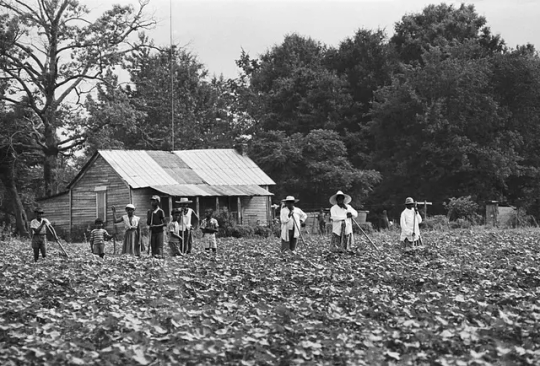
Her land, 40 acres set amid rolling pines outside of Auburn, Ala., was purchased in 1911 and passed down through generations, a rare example of Black land ownership in the Deep South. But in recent years, this once rural property, now parsed out among various family members in a form of ownership known as “tenants in common,” has caught the attention of investors who hope to purchase and develop properties they consider prime real estate.
Cleveland Brothers Incorporated bought out Woodson’s relatives, accumulating 49% ownership of the previously Black-owned property. Now, the case is making news as it heads toward the Alabama Supreme Court, with the company declaring that it will suffer “financial harm” if Woodson delays the sale of her share. (A representative of Cleveland Brothers told WTVM that Woodson could stay on the property for a year even if the sale goes through.)
Soon, Cleveland Brothers will probably purchase the remaining property, displacing Woodson. “It’s happening right before our eyes,” Melissa Woodson, Corine’s daughter and a licensed realtor said, “and the sad thing is that there is very little we can do about it.”
Stories like Woodson’s have been common for Black residents of the rural South for more than a century. The continuation of patterns of Black land dispossession exposes how—for all of the civil rights gains made over the last 60 years—there is still much to be done to secure racial equality in the U.S.
At the turn of the 20th century, Black landowners owned and operated 890,000 farms. Around midcentury, however, that number began to decline sharply. Beginning in 1950, they lost more than half a million farms; by 1970, only 45,000 remained. During the 1960s alone, the Black farm count in 10 southern states dropped by 88%.
Read More: The Forgotten School Integration Story that Challenges What We Think We Know
This drop off reflected how, for decades, wealthy white people utilized the power they held in their communities as government officials and business owners to push local Black people off land that their families had lived on for generations. Local white people also exploited new laws and subsidies to remove landowners or renters, deploying what an Emergency Land Fund report in 1974 described as, “a great deal of chicanery.” New capital-intensive farming practices also favored the wealthy, while industrial development led to corporate interest in rural tracts, driving up prices.
Rural Black women were particularly vulnerable to these threats of dispossession. Take Susie Young, for instance. Within two weeks of the death of her husband in 1955, Young received notice from the Allison Lumber Company that she had to vacate the land her family rented from them and had tended for over 20 years in Choctaw County, Ala. They considered her now incapable of maintaining the property.
One Black Perry County, Ala., woman had a similar experience. After the death of her mother in the 1950s, a nearby white landowner returned to claim the 60 acres her parents had bought decades prior claiming he “didn’t sell [her] that land.” Though the family retained counsel and provided proof of purchase, they were nevertheless pushed off their land. Black landowners often lacked formal deeds, and white judges frequently ruled against their claims.
Even as the Civil Rights Act of 1964 and the Voting Rights Act of 1965 afforded Black Americans new opportunities and greater equality in many areas of life, these laws didn’t address land loss. In fact, the 1960s introduced a massive contradiction: at the same moment Black Americans achieved political gains, they were also experiencing a quiet economic catastrophe, the result of what historian Pete Daniel calls “intended consequences.”
Of course, civil rights organizations recognized the impact of Black land loss, not only for landowners but also for sharecroppers and tenant farmers. The Student Nonviolent Coordinating Committee (SNCC), the Congress of Racial Equality (CORE), Federation of Southern Cooperatives (FSC), and regional groups, such as the Southwest Alabama Farmers Cooperative Association (SWAFCA), pushed back against white structural control and assisted Black people facing displacement.
They understood that resistance to economic exploitation was inextricably intertwined with the civil rights movement’s racial justice initiatives. In 1968, for instance, the United States Commission on Civil Rights (USCCR) conducted an investigation of land dispossession in Alabama’s Black Belt. The Commission found that rural Black men and women were pushed off land at higher rates than whites, denied protections and grants by local Farmers Home Administration (FHmA) and Agricultural Stabilization and Conservation Service (ASCS) officials, and intimidated by hostile neighbors.
Civil rights organizations and the USCCR advised stronger enforcement of federal protections against discrimination and fair access to federal programs and grants. But it was state and local offices, often run by racist whites, that controlled implementation of these programs. This structure meant that racial equality and programs to assist the poor were nothing more than “empty promises and a cruel hoax.”
Decades later, the federal government agreed. In 1997, a group of Black farmers filed a massive class-action lawsuit against the U.S. Department of Agriculture, arguing that between 1981 and 1996, the department had discriminated against them on the basis of race. The USDA denied Black farmers loans and delayed assistance, which resulted in land loss. The plaintiffs won. The decision in Pigford v Glickman and a subsequent settlement inspired a second round of filings in 2010, known as Pigford II. In his landmark opinion, District Judge Paul Friedman acknowledged that, despite the settlement, “historical discrimination cannot be undone for the broken promise to African Americans and their descendants.”
Read More: How Civil Rights Were Made—and Remade—By Black Communities In the Jim Crow South
But these struggles have gone unnoticed by most Americans. Traditional civil rights narratives have typically centered urban spaces like Atlanta, Birmingham, or Memphis. Yet even as the civil rights revolution brought significant gains to Black residents of those cities, the story was very different in rural places like Lee County, Ga., or Lowndes County, Ala. As activist Wendell Paris put it, “the civil rights movement passed over Sumter County, Alabama, altogether.” In rural spaces, the same old local white power structures continued to dominate county boards and courts, while wielding new tools to exclude and limit Black Americans. Land loss was one of these.
Rural stories of dispossession like Woodson’s—and the sobering reality that they continue to happen—challenge popular civil rights narratives. These hopeful, progress oriented arcs, reveal an American propensity for national congratulation and, as Jeanne Theoharis has contended, “place the struggle against racial inequality firmly in the past.”
And yet, white supremacist power has not disappeared. While some of its iterations remain overt, others have shapeshifted since the 1960s, adopting new rhetoric and tactics even as they wreak familiar devastation on Black lives and Black communities. Redlining, gerrymandering, harsh sentencing, and predatory lending have proliferated just as talk of colorblindness has become mainstream. Indeed, as professions of racial parity have increased so have discrepancies in outcomes, hidden and compounded by the invisible hands of racial capitalism.
In 1968, C.H. Erskine Smith, then Chairman of the USCCR’s Alabama State Advisory Committee implored: “the people of rural Alabama and the rural South must not be forgotten.” To understand the long Black freedom struggle and to seek racial justice today means that we must heed his call.
Ansley Quiros is an associate professor of history at the University of North Alabama and author of God With Us: Lived Theology and the Freedom Struggle in Americus, 1942-1976. She and Dr. Matthew Schoenbachler are currently working on a memoir with Dr. Wendell Gunn. Allie R. Lopez is Ph.D candidate in history at Baylor University, writing a dissertation on the freedom struggle in rural Alabama. Made by History takes readers beyond the headlines with articles written and edited by professional historians. Learn more about Made by History at TIME here.
#The Quest for Racial Equality Has Always Been Different for Rural Americans#Black Landowners#Black#Black Land#Freedmen#Reparations#white hate#white lies#american decapitation of Black Wealth
42 notes
·
View notes
Note
hi saki hiii if it's not 2 much of a bother, do u have a link to a batman reading list w some of the older comics u often talk abt? despite The Disease I've only read maybe 4 actual Bruce Wayne centered runs
-Angel 🫶🏾
HI ANGEL !!! unfortunately i have not yet found a good reading list of older batman comics. most of them are just like "read every single thing published since 1940" and like, okay, fair enough, but also no one wants to do that.
fortunately this gave me an excuse to look through my own fav reads and compile a short list to get you started! the thing about older batman comics is that (personally) they are far more easier to follow compared to modern day comics, so once you get familiar with the older style and layouts, it's so easy to just find the kind of stories you want to read!
most of these are published after the 1970s but all of them are before the New 52 (2011) !!
for a more concise list (+content/trigger warnings) you can find this reading list on my comic geeks.
> Batman: Legends of The Dark Knight
now this collection features over 200 issues and a dozen writers BUT it's because it's full of 2-4 issue short stories. out of these, the ones i recommend most to begin with are; #16-20 (venom), #39-40 (mask), #100 (the choice).
if you like the tone of these, then i would recommend reading the other stories too. great thing is that they're not connected to each other at all, so if you don't like one then you can skip it no problem. i definitely jumped over a few writers and weird stories when reading.
> Batman 1940
now from the main run itself, the advice to just read everything published is not worth it. some of these stories really just drag or are super confusing.
some favourites of mine to start with are; #402-403 (One Batman Too Many), #423 (You Shoulda Seen Him...) and of course, #404-#408 (Batman Year One).
> Detective Comics
now i have always been of the opinion that tec is the better of the two main runs, and you can really see the quality of story telling shine in older comics !
a few of my favourite issues are: #408 (The House That Haunted Batman), #439 (The Night of the Stalker), #457 (There is No Hope in Crime Alley!), #573-574 (My Beginning... and my Probable End) and #598-#600 (Blind Justice).
> The Brave and The Bold
all runs of tbatb runs, whether that be the 1950, 1990, 2007 or even present 2023 run, are so good !!!
for an older story, #93 (published 1970) is my favourite !!
> Batman Black and White
okay so i know i have been giving singular issue recs up until now but i am so serious when i say you should just read every single issue of Batman Black and White. there are three runs, the 1996, 2014 and 2020 with only around 6 issues each. some of the best and truly life changing stories are within it.
in fact, my all time number one favourite batman comic EVER is published in #1 of the 1996 run (Perpetual Mourning). there will never be a batman story ever like it again.
> Other Stories
there was something in the air during the 1990s, because some of the best ever batman stories were published during that time. i fear there has truly never been such a stacked decade like that one.
a few essential must reads from 1980s-1990s; Batman The Cult, Batman: Night Cries, Batman: War on Crime, Batman: The Ultimate Evil, Batman: Son of the Demon.
happy reading!!!!
18 notes
·
View notes
Text
My Top 6 Films of 2023
Just some recommendations for my favourite new releases of last year!
Originally published on Cinemania.
2023 had a few knock-out hits as far as the cinema goes — obviously, people were very excited about the respective releases of Barbie and Oppenheimer, but my top films of the year were a bit different.
One thing I do think unites a lot of these — and a trend I hope to see from more films in the next few years — is a trend toward more earnestness and sincerity in scripts and plot lines, and I’m hoping that trend continues!
Without further ado, my top films of 2023:
They Cloned Tyrone (dir. Juel Taylor)

They Cloned Tyrone is a fucking triumph, and hands-down had my favourite costume design of the year — it at the same time feels very vintage in places, calling heavily on the Blaxploitation movies of the 1970s and their aesthetics while at the same time dragging in more modern— and dystopian — futuristic elements throughout. Teyonah Parris is a particular triumph as Yo-Yo, but the whole cast really rocks this whole flick.
This film feels in so many ways like a fever dream, layering disparate elements and tones, and for that is all the more hard-hitting with the horror and painful realism of its cynical central plot.
If you watch a single of the films recommended on this list, make it this one.
Down Low (dir. Rightor Doyle)
This film is weird as fuck, and it makes a lot out of leaning into that. Delving into the ugly reality of down-low hook-ups on gay dating apps and dialing the chaos that can arise from them up to the max, this is a surprisingly heartfelt look at gay loneliness and isolation in the white middle-class US.
It’s fast-paced and kooky with its dialogue — Lukas Gage, of Euphoria fame, co-wrote the script with Phoebe Fisher, and Gage’s particular style of verbose and down-right weird speeches are dotted through it — and while it ultimately ends in the death you know from the beginning is coming, it doesn’t feel like it’s wholly a tragedy.
Dungeons and Dragons: Honour Among Thieves (2023, dir. John Francis Daley & Jonathan Goldstein)
I don’t think I need to go into great detail about this one — Dungeons and Dragons’ newest addition to its array of canons here is a spellbinding and delightful watch. A lot of the problem with fantasy films and TV shows the past few years has been how painfully over-ironic they are, with none of them being able to just lean into their premise and accept that, yes, we’re being a bit silly, and that’s the point! But the DnD movie is just spectacularly earnest and gives itself entirely over to the wonder of its world, and that feels wonderful.
Every time I’ve watched it, which is a few times now, I’ve picked up on new fun world details or little in-jokes, and there are just so many things this film does right and has fun with, most of all making Xenk Yendar even more autistic than ever whilst also making him hot with the Regé-Jean Page casting.
And also, Hugh Grant is here playing a horrible, sleazy bastard of a wizard, and speaking of hot —

Cocaine Bear (dir. Elizabeth Banks)
Must a film be good?
Firstly, isn’t a coked-up horny female bear wreaking havoc and ripping people to shreds enough? And also, even if it wasn’t enough, aren’t so many queer characters going through the weirdest day out ever, girlbosses galore (I’m including the bear), funny as Hell dialogue, and even plot twists enough?
We saw this in the cinema on its release, and it was utterly glorious. Everyone should have the pleasure of seeing the feminist icon of 2023, the cocaine bear (sorry, Barbie), on the biggest screen imaginable, ripping into some hapless gay with full surround sound.
The Boogeyman (dir. Rob Savage)
I normally run along to see any new releases from Rob Savage as I loved Host, and The Boogeyman was so much more than I expected — bearing no resemblance at all to the original lacklustre Stephen King short story, this film really plays so creatively with light and shadow and has an honestly spine-tingling monster design that feels viscerally frightening from its introduction to its final boss battle.
I love it when a film plays with light sources, most of all when good horror does it, and this flick really delivers on that point — not knowing where light is going to come from adds extra tension when you’re trying to see into the shadowy corners, and whether it’s from the lunar nightlight, the videogame flashes, the camera, the fridge, or anywhere else, this film really has this holistic approach to light and shadow that just fucks.
The Pope’s Exorcist (dir. Julius Avery)
Again, must a film be good?
youtube
Isn’t it enough to have a coked-up bear —
Okay, I used that line already, but this time it’s Russell Crowe, and he’s doing an Italian accent, and he’s riding a little Vespa, and it’s the funniest and best thing in the world.
Much like the DnD movie, The Pope’s Exorcist really leans into its premise and just goes really earnest about it — it doesn’t take too much time to sardonically comment on the ridiculousness of its own universe, and that makes it feel really fresh compared to a lot of other big studio horror films. It’s silly and stupid and mixes more impressive scares in with the cheap ones, and it’s just a really fun movie to watch with friends.
30 notes
·
View notes
Note
you're like the only person i've seen on here from northern ireland who actually loves northern ireland - what do you think makes it so great? (really sorry if this seems rude, i'm just interested in how the opinions can be so wildly different)
thank you very much for the ask, anon!
my online presence as a northern ireland stan account is mainly caused by holding the following opinion:


it is an unfortunate truth that the moment you are clocked in most other places in the anglophone world as being northern irish [usually after having been compelled to say the word "how"], people like to offer you their views on the place.
these views aren't always negative, but they always - especially if they come from people who consider themselves part of the irish diaspora [and my st patrick's day sermon to you all is "irish-americans, learn to stay in your lane"] - relate to a northern ireland which doesn't actually exist. people might cast us as uncivilised fools living in a 1970s time-capsule of unrelenting violence, they might cast us as a great bunch of lads bouncing around feeling the derry girls fantasy, but they never care very much about the actual experience of living here in 2024.
and - indeed - the experience of choosing to live here. i like ni because i was born here, and so all of the formative experiences of my early life took place while drinking a tin in some field or other, but it's also somewhere i have returned to, after having gone to university and begun my medical training in england.
and this is an aspect of irish life which doesn't have a huge presence in the way we think and talk about irishness. so much irish history is bound up in migration - in leaving the motherland and longing for it from afar - and in the diaspora experience that we rarely think about the fact that people have always and will always come to ireland. people - whether returning here or coming to study or coming to live forever or coming to live until they too can return home - choose every day to put down roots in northern ireland, despite all its faults and its flaws.
and it bothers me that this is constantly forgotten in all the giving out we all do about the place.
because - yes - this is a country which is fucked up in a huge number of ways. our politics is corrupt and nonsensical even when up against the bin fire which is the rest of the united kingdom. our people are beset by poverty and deprivation [and i will of course acknowledge that i am someone who lives here with a well-paid, stable job]. our sectarian wound is still bleeding, heavily. we have not seen justice for the atrocities perpetuated against us by the british state during the troubles, nor for the atrocities we perpetuated against our own at the same time. we have not learned from our own experiences of discrimination when it comes to discriminating against people who live here who are not white, who are not christian, or who are immigrants. it rains for a good three quarters of the year.
but as i grow older, i find i have less and less time both for pure and grinding cynicism in the face of this situation and for the conviction that the grass might be greener somewhere else. i think this latter is a particular issue in the irish national character - a sort of "ah well, things are shite and they'd only be better if x happened". in the north, i think we're especially beset by this - "the country can't improve until there's a united ireland" [or, if you're on the other side, "the country can't improve until the fenians stop complaining"].
but we have a lot to be proud of and a lot to be hopeful for as we keep going.
because northern ireland is also a place whose history is about peace as much as it is about war. it's the birthplace of the best member of girls aloud. it's somewhere people have mobilised only recently for pay and working conditions on a par with the rest of the uk, and will keep mobilising until we win. it's introduced the world to the fact that protestants keep toasters in cupboards. it's a place whose own fight for reproductive justice has rather flown under the radar in comparison to that of the republic of ireland, but which is no less active. it's a place where it's perfectly acceptable to be served apple and mars bar sandwiches at a funeral [provided the deceased was presbyterian]. it's a place where you never have to become invested in the nation's performance in international sporting competitions and can get blind drunk as god intended. it's a place with great patter.

it's a place which has perfected street art... in a sense. it's a place where you can get unusual soft drinks delivered to your door by a sinister figure called the minerals man. it's a place which recognises that balaclavas are chic. it's the only place on earth you can buy fifteens and a cowboy supper, whether or not you actually should do the latter. it's a place where you can turn bomb scares to your advantage by using them as an excuse to swerve parties you didn't want to attend. it's a place whose people have not given up their fight for justice, who still grieve and remember the dead and the disappeared. it's a place people travel across the world to make their home and enrich with their presence. it's a place where the quality of life is genuinely improving, and which we can continue to improve if we don't give into the idea that nothing can ever change. it's a cold and rainy little country, filled with nondescript grey housing estates and burned out cars, which also looks like this:





happy st patrick's day.
15 notes
·
View notes
Text
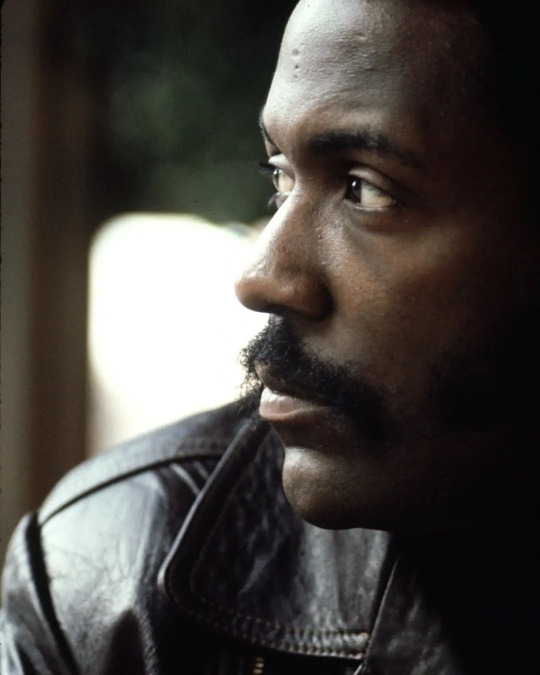
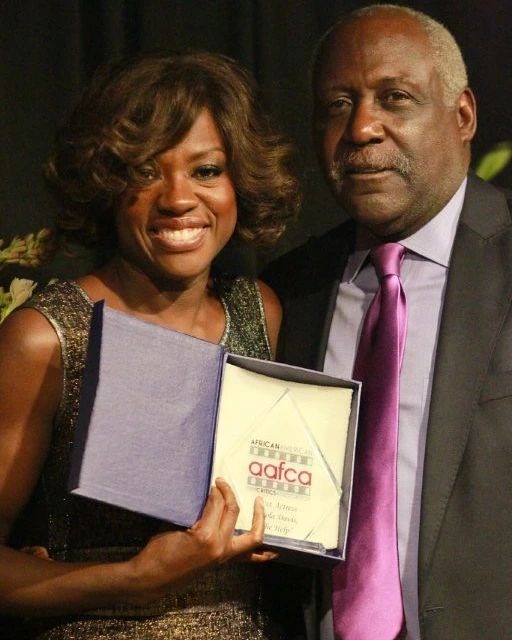
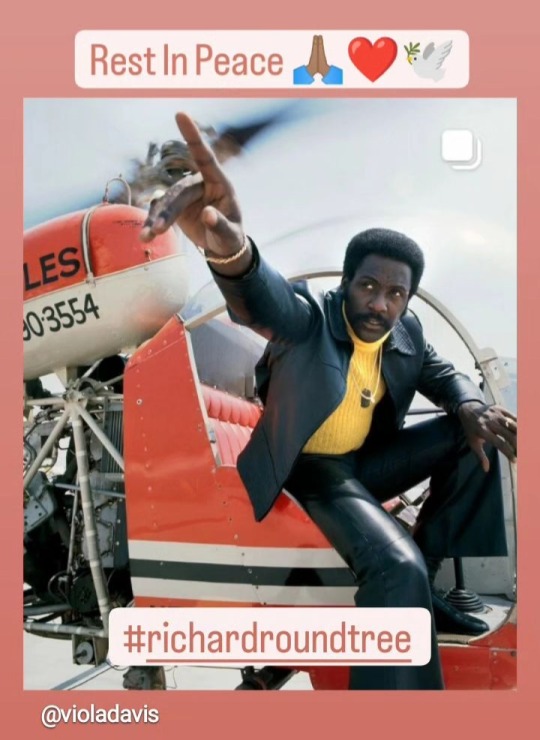


Richard Roundtree (July 9, 1942 – October 24, 2023) was an American actor, noted as being "the first black action hero" for his portrayal of private detective John Shaft in the 1971 film Shaft, and its four sequels, released between 1972 and 2019. For his performance in the original film, Roundtree was nominated for the Golden Globe Award for New Star of the Year – Actor in 1972.
Born July 9, 1942, in New Rochelle, New York, to John Roundtree and Kathryn Watkins, Roundtree attended New Rochelle High School; graduating in 1961. During high school, Roundtree played for the school's undefeated and nationally ranked football team. Following high school, Roundtree attended Southern Illinois University in Carbondale, Illinois. Roundtree dropped out of college in 1963 to begin his acting career.
Roundtree began his professional career around 1963. Roundtree began modeling in the Ebony Fashion Fair after being scouted by Eunice W. Johnson. After his modeling success with the Fashion Fair, Roundtree began modeling for such products as Johnson Products' Duke hair grease and Salem cigarettes. In 1967, Roundtree joined the Negro Ensemble Company. His first role while a part of the company was portraying boxing legend Jack Johnson in the company's production of The Great White Hope. According to J. E. Franklin, he acted in the Off-Off-Broadway production of her play Mau Mau Room, by the Negro Ensemble Company Workshop Festival, at St. Mark's Playhouse in 1969, directed by Shauneille Perry.
Roundtree was a leading man in early 1970s blaxploitation films, his best-known role being detective John Shaft in the action movie, Shaft (1971) and its sequels, Shaft's Big Score! (1972) and Shaft in Africa (1973). Roundtree also appeared opposite Laurence Olivier and Ben Gazzara in Inchon (1981). On television, he played the slave Sam Bennett in the 1977 television series Roots and Dr. Daniel Reubens on Generations from 1989 to 1991. He played another private detective in 1984's City Heat opposite Clint Eastwood and Burt Reynolds. Although Roundtree worked throughout the 1990s, many of his films were not well-received, but he found success elsewhere in stage plays.
During that period, however, he reemerged on the small screen as a cultural icon. On September 19, 1991, Roundtree appeared in an episode of Beverly Hills, 90210 with Vivica A. Fox. The episode was "Ashes to Ashes", Roundtree playing Robinson Ashe Jr. Roundtree appeared in David Fincher's critically acclaimed 1995 movie Seven, and in the 2000 Shaft, again as John Shaft, with Samuel L. Jackson playing the title character, who is described as the original Shaft's nephew. Roundtree guest-starred in several episodes of the first season of Desperate Housewives as an amoral private detective. He also appeared in 1997's George of the Jungle and played a high-school vice-principal in the 2005 movie, Brick. His voice was utilized as the title character in the hit PlayStation game Akuji the Heartless, where Akuji must battle his way out of the depths of Hell at the bidding of the Baron.
In 1997–1998, Roundtree had a leading role as Phil Thomas in the short-lived Fox ensemble drama, 413 Hope St. He portrayed Booker T. Washington in the 1999 television movie Having Our Say: The Delany Sisters' First 100 Years.
Beginning in 2005, Roundtree appeared in the television series The Closer as Colonel D. B. Walter, U.S.M.C. (retired), the father of a sniper, and in Heroes as Simone's terminally ill father, Charles Deveaux. Next, Roundtree appeared as Eddie's father-in-law in episodes of Lincoln Heights. Roundtree then had a supporting role in the 2008 Speed Racer film as a racer-turned-commentator who is an icon and hero to Speed. He also appeared in the two-parter in Knight Rider (2008) as the father of FBI Agent Carrie Ravai, and co-starred as the father of the lead character on Being Mary Jane, which has aired on BET since 2013.
In 2019, Roundtree co-starred in the comedy film film What Men Want, and returned to the role of John Shaft in Shaft, a sequel to the 2000 film, opposite Samuel L. Jackson and Jessie Usher, who portray John Shaft II and John Shaft III, respectively. This time, Roundtree's character was described as Jackson's character's father, while acknowledging that Roundtree had pretended to be Jackson's Shaft's uncle in the 2000 movie. He also starred in the movie, Family Reunion in 2019.
Roundtree was married and divorced twice and had five children. His first marriage was to Mary Jane Grant, whom he married on November 27, 1963. Roundtree and Grant had two children before divorcing in December 1973. He dated actress and TV personality Cathy Lee Crosby shortly thereafter. Roundtree later married Karen M. Ciernia in September 1980; together they had three children. Roundtree and Ciernia divorced in 1998. Roundtree was diagnosed with breast cancer in 1993 and underwent a double mastectomy and chemotherapy.
Roundtree died of pancreatic cancer at his Los Angeles home on October 24, 2023, at the age of 81.
My deepest condolences to his family and friends. 🙏🏾❤️🕊
11 notes
·
View notes
Text
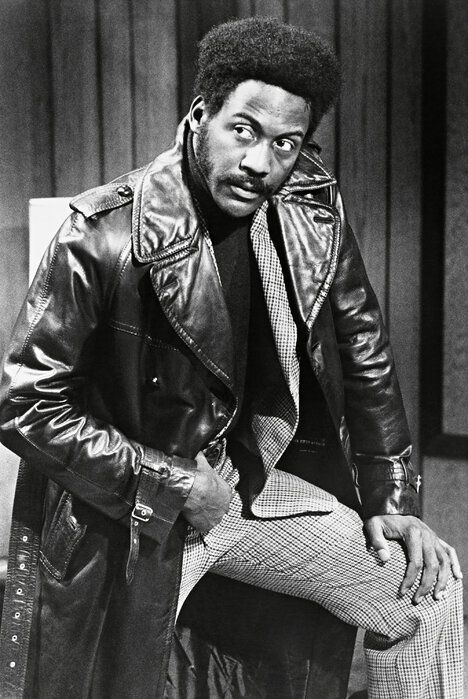
For the opening scene of Shaft – the 1971 film that helped inaugurate the “blaxploitation” genre and spawned an Oscar-winning song in Isaac Hayes’s call-and-response classic Theme from Shaft – the director Gordon Parks mapped out to the actor Richard Roundtree exactly what would happen.
Roundtree – playing the New York detective John Shaft who “won’t cop out when there’s danger all about” as the song puts it – was to stride out of the subway near Times Square, tracked by assorted cameras positioned opposite him and at high angles. “I want you to walk across 42nd Street,” Parks said. “And I want you to own it.”
Own it he did. In his beige turtleneck and brown leather trench coat, Roundtree swaggers and weaves through the hubbub, looking bemused at a demonstration going on around him (which was nothing to do with the film itself but a real-life protest by the Gay Activists Alliance) and improvising the moment when he raises his middle finger at an impatient cabbie. “I did own it,” he reflected. “Much better than I could ever have imagined.”
It was the first major screen appearance for Roundtree, who has died aged 81 of pancreatic cancer, and the one that defined him for the rest of his life. He was cast after a meeting with Parks, a former photojournalist, who showed him a magazine advertisement and said: “We’re kind of looking for a guy who looks like this.” Serendipitously, it was an ad featuring Roundtree himself.
In optioning Ernest Tidyman’s 1970 novel, in which Shaft is hired to rescue a gangster’s kidnapped daughter, MGM had considered making the characters white. But Parks defended the novel’s vision, including its acute awareness of Black culture. He wanted audiences “to see the Black guy winning”.
That single-mindedness paid off, saving the troubled studio from bankruptcy. “Ghetto kids were coming downtown to see their hero, Shaft, and here was a Black man on the screen they didn’t have to be ashamed of,” the director said in 1972. “We need movies about the history of our people, yes, but we need heroic fantasies about our people, too. We all need a little James Bond now and then.”
John Shaft was suave and uncompromising, free to dispense justice his own way, and cut from a snazzier cloth than the nobler roles for which African-American stars such as Sidney Poitier were known. In 2000, the critic Elvis Mitchell noted that Roundtree’s “on-screen relish, which was itself a kind of dynamism, connected to an audience hunger. And he held the screen like an aristocrat.” Mitchell compared him to Sean Connery, identifying “the same outsize wellspring of charm and virility, but with a leavening … sense of self-deprecation”.
He did many of his own stunts. “We could get close with our helicopter shots because you could see it really was Roundtree and not a stunt driver,” said Parks. “We spent 12 days on that chase, and wrecked four cars, two boats and a mock-up chopper.”
The actor returned for two sequels, Shaft’s Big Score! (1972), which was also directed by Parks, and Shaft in Africa (1973), which, regrettably, was not. After a brief Shaft TV series in the same year, which Roundtree described as “an ugly point in my long, illustrious career”, he was done with John Shaft. For now.
Born in New Rochelle, New York, to Kathryn (nee Watkins), a cook and housekeeper, and John Roundtree, a refuse collector and later church minister, Richard attended New Rochelle high school and won a football scholarship to Southern Illinois University. After working at Barneys department store, he modelled clothes and became one of the stars of the Ebony Fashion Fair, a touring spin-off of Ebony magazine. He then joined the Negro Ensemble Company in New York City and starred in its 1967 production of The Great White Hope.
Capitalising on the heat from Shaft, he joined Charlton Heston and Ava Gardner in the disaster movie Earthquake (1974), played the title character in Man Friday (1975) opposite Peter O’Toole as Robinson Crusoe, and appeared as a rakish carriage driver in the slavery-era TV drama Roots (1977).
In between TV series, including most recently Family Reunion on Netflix, he was in the action comedy City Heat (1984), set during the Depression and starring Clint Eastwood and Burt Reynolds, the gruesome serial-killer hit Seven (1995) alongside Brad Pitt and Morgan Freeman, the Disney comedy George of the Jungle (1997) and Rian Johnson’s witty neo-noir thriller Brick (2005).
Having declined various Shaft-related offers, he finally relented and appeared in John Singleton’s reboot, Shaft (2000), with Samuel L Jackson as his nephew. He returned for a misguided comic riff on the franchise, also called Shaft (2019), which revealed that Jackson’s character was in fact his son, and brought in a new generation in the form of a sensitive, gun-hating grandson.
“Everybody wanted to be you for a very long time,” Jackson told Roundtree in a 2019 interview with the Los Angeles Times. “You defined what cool was – you had the look, the walk, the attitude.”
Pigeonholed by the part in the 1970s, Roundtree finally made peace with it. “Sometimes it’s much easier to ride the horse in the direction that it’s going,” he said.
He was married and divorced twice, to Mary Jane Grant, then Karen Ciernia. He is survived by two daughters, Kelli and Nicole, from his first marriage, and two daughters, Tayler and Morgan, and a son, John, from his second.
🔔 Richard Arnold Roundtree, actor, born 9 July 1942; died 24 October 2023
Daily inspiration. Discover more photos at Just for Books…?
10 notes
·
View notes
Text
Elvis trying on a Native American headdress in December 1960, when he was inducted into the Los Angeles Indian Tribal Council on the day “Flaming Star” opened. The reason for the induction was the constructive portrayal of Native Americans in that movie. He played Pacer, a half-Kiowa character. Elvis himself was 1/16th Native American through his maternal great-great-great grandmother Morning Dove White, who was a full-blooded Cherokee Indian. He paid homage to his heritage in the details of some of his jumpsuits in the 1970s.
Happy Thanksgiving to my American friends. I hope this post is not offensive to anyone. The whole world needs healing.
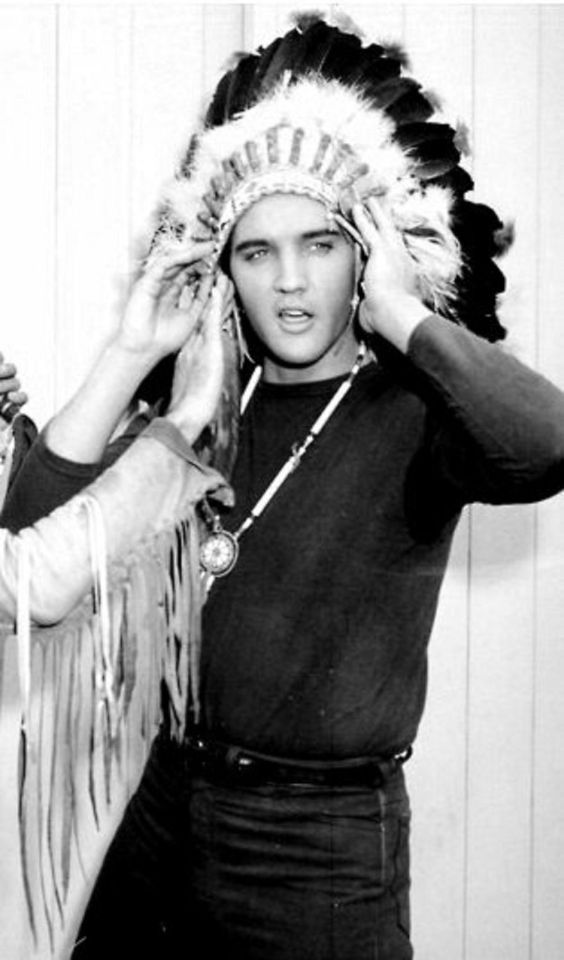
72 notes
·
View notes